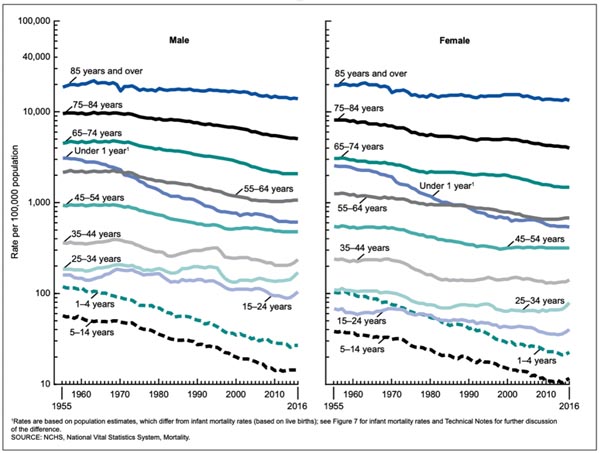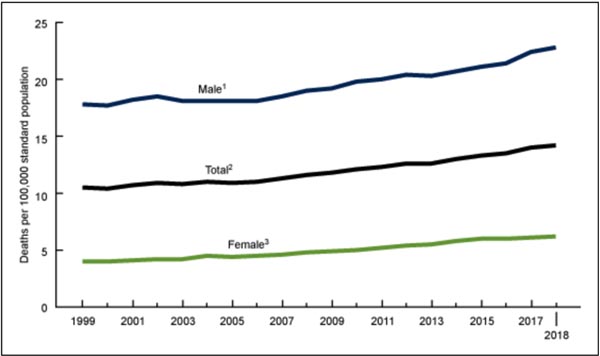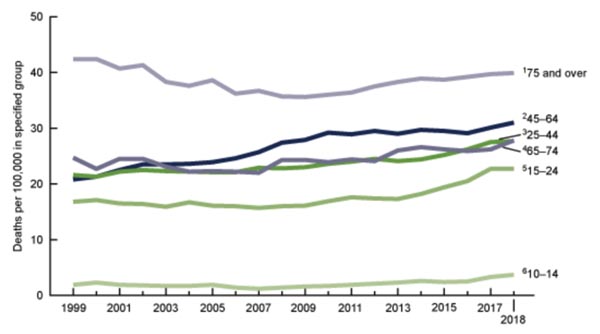Chapter 01 - History and Introduction
This New Science of Societies: Sociology
Sociology is a relatively new discipline in comparison to chemistry, math, biology, philosophy and other disciplines that trace back thousands of years. Sociology began as an intellectual/philosophical effort by a French man named Auguste Comte (born 1798 and died 1857). He is considered the founder of sociology and coined "Sociology." Comte's Definition of Sociology is the science of society. In his observation Comte believed that society's knowledge passed through 3 stages which he observed in France. His life came in what he called the positivism stage (science-based). Positivism is the objective and value-free observation, comparison, and experimentation applied to scientific inquiry. Positivism was Comte's way of describing the science needed for sociology to takes its place among the other scientific disciplines.
His core work, "The Positive Philosophy of Auguste Comte" was translated by a British-born philosopher named Harriet Martineau (1802-1876). She literally clarified Comte's original writing as she condensed it into a concise English language version. This expanded the interest in sociology to include English speakers. Martineau held values that are common today but were way before her time. She opposed oppression, especially of women and Black slaves in the US. Her own work about society which first addressed this, Society In America has been scanned and is free (public domain) to read at SOURCE .
Why did thinkers of the day find a need for a new science of sociology? Societies had change in unprecedented ways and had formed a new collection of social complexities that the world had never witnessed before. Western Europe was transformed by the Industrial Revolution, a technological development of knowledge and manufacturing that began in the late 1600s and continued until the early 1900s. The Industrial Revolution transformed society at every level. Look at Table 1 below to see pre and post-Industrial Revolution social patterns and how different they were.
Table 1. Pre-Industrial and Post-Industrial Revolution Social Patterns
| Pre-Industrial Revolution | Post-Industrial Revolution |
|---|---|
| Farm/ Cottage | Factories |
| Family Work | Breadwinners /Homemakers |
| Small Towns | Large Cities |
| Large Families | Small Families |
| Homogamous Towns | Heterogamous Cities |
| Lower Standards of Living | Higher Standards of Living |
| People Died Younger | Peopled died older |
Prior to the Industrial Revolution, families lived on smaller farms and every able member of the family did work to support and sustain the family economy. Towns were small and very similar (homogamy) and families were large (more children=more workers). There was a lower standard of living and because of poor sanitation people died earlier.
After the Industrial Revolution, farm work was replaced by factory work. Men left their homes and became breadwinners earning money to buy many of the goods that used to be made by hand at home (or bartered for by trading one's own homemade goods with another's). Women became the supervisors of homework. Much was still done by families to develop their own home goods while many women and children also went to the factories to work. Cities became larger and more diverse (heterogamy). Families became smaller (less farm work required fewer children). Eventually, standards of living increased and death rates declined.

It is important to note the value of women's work before and after the Industrial Revolution. Hard work was the norm and still is today for most women. Homemaking included much unpaid work. For example, my 93 year old Granny is an example of this. She worked hard her entire life both in a cotton factory and at home raising her children, grand-children, and at times great grand-children. When I was a boy, she taught me how to make lye soap by saving the fat from animals they ate. She'd take a metal bucket and poke holes in the bottom of it. Then she burned twigs and small branches until a pile of ashes built up in the bottom of the bucket. After that she filtered water from the well through the ashes and collected the lye water runoff in a can. She heated the animal fat and mixed it in the lye water from the can. When it cooled, it was cut up and used as lye soap. They'd also take that lye water runoff and soak dried white corn in it. The corn kernel shells would become loose and slip off after being soaked. They'd rinse this and use it for hominy, or grind it up and make grits from it. We'll talk more about women and work in Chapter 10.
These pre and post-industrial changes impacted all of Western civilization because the Industrial Revolution hit all of these countries about the same way: Western Europe, United States, Canada, and later Japan and Australia. The Industrial Revolution brought some rather severe social conditions which included: deplorable city living conditions; crowding; crime; extensive poverty; inadequate water and sewage; early death, frequent accidents, and high illness rates. The new social problems required a new science that was unique from any scientific disciplines of the day. Comte wanted a strong scientific basis for sociology, but because of various distractions he never quite established it.
Core Founders of Sociology
Emile Durkheim (1858-1917) was the first to take a position in a university and because of the scientific journal he edited, L'Anné Sociologique (the sociological year) and his scientific work, he was able to help sociology to become part of higher education's academic culture. He was also French and took the first position at a university as a sociology professor.
Durkheim discussed Social Facts, a phenomena within society that typically exists independent of individual choices and actions. Durkheim approached a subject that most thought of as being exclusively individualistic in nature-suicide. But, he defined suicide from a social fact perspective which helped him to establish the unique wisdom of sociological analysis.
Social Integration is the degree to which people are connected to their social groups. Let's check your own personal degree of social integration. On a piece of paper right down how many close family members you have. Then add in how many close friends and coworkers you have. Finally add in all others whose name you know and they know yours. This number is one measure of your social integration. But, to really get an idea you might evaluate these relationships. In other words list your top 6 closest relationships in order. Make a short list of the 6 closest relationships you have. Now, rank 1 for the closest, 2 for next closest and so on up to 6th. Durkheim realized from his suicide studies that the closer we are to others, the more socially integrated we are and the less likely we are to commit suicide. The second concept to understand is called anomie.
Anomie is a state of relative normlessness that comes from the disintegration of our routines and regulations. Anomie is common when we go through sudden changes in our lives or when we live in larger cities. Sudden changes bring stress and frustration. To illustrate this, I often tell my students to remember how they felt the day after high school graduation. They walk for graduation then wake up the next morning with very few demands on their time and energies. This sudden shift in demands from very intense to almost absent, leads many to feel extremely frustrated and lost. Add to that they are now adults and no longer students (children) and you get a prime formula for anomie (role shift + vague expectations about what is expected + sudden change=anomie).
One of my college students told me that at the end of last semester she had 4 finals, one paper, two presentations, and one lab project all due in the last 5 days of class. She finished it all, packed, and moved back home. The first morning she woke up at home she got out her planner and realized that all she had to do that day, in other words all the demands placed upon her were to eat and shower. She was not a full-time university student for now and was between significant roles. "It took a week to get my life back into a routine for the break," she explained.
As a larger social fact, anomie is a byproduct of large complex societies, especially around large cities. It's easier to get lost in the crowd, not be noticed, and to rarely receive praise or criticism for personal actions. Durkheim and others were aware that society impacted the life of the individual even if the individual had very little impact on society. By the way, Durkheim measured suicide rates and so do we in our day. Suicide is the purposeful ending of one's own life for any reason. Suicide Rate is the numbers of suicides per 100,000 people in a population.
Durkheim's first 2 types of suicide had to do with the degree of social integration of the individual into their groups. Altruistic Suicide is suicide which occurs when people are over involved and over committed to a group or society as a whole. This occurs when the needs of society as a whole override the needs of the individual. Soldiers often do this to protect their comrades.

Egoistic Suicide is suicide which occurs when people are under-involved or under-committed to groups. This is the loner-type suicide when an individual is disconnected (or never connected) to others. Certain social pressures isolate us more than others and suicide becomes more risky for the isolated. Certain social forces within society create this isolated state within us (TV viewing, video games, online time, and other solo activities that preoccupy us with our own interest and isolate us from our groups and relationships; see www.youtube.com and search "James at war Halo3" for a humorous example of technology isolating us from others).
Interestingly, the Suicide Prevention Resource Center gives a few suicide prevention strategies that relate to social integration: "Strong connections to family and community support, cultural and religious beliefs that discourage suicide and support self-preservation and various other types of social support are recommended" (retrieved 13 January, 2009 from www.sprc.org the "Risk and Protective Factors for Suicide," National Strategy for Suicide Prevention: Goals and Objectives for Action, 2001). Interestingly Durkheim's work is quoted multiple times on this Website.
A Newer US Center for Disease Control reported that suicide is not just medical or "mental" in nature. This report also Identified sociological factors that are often involved: Suicide is a leading cause of death in the US. Suicide rates increased in nearly every state from 1999 through 2016 (retrieved 30 June 2020 from Suicide rising across the US found at SOURCE. Mental health conditions are often seen as the cause of suicide, but suicide is rarely caused by any single factor. In fact, many people who die by suicide are not known to have a diagnosed mental health condition at the time of death. Other problems often contribute to suicide, such as those related to relationships, substance use, physical health, and job, money, legal, or housing stress. This CDC-created map is telling in the fact that only 1 state saw a decrease in suicide rates between 1999-2016.

All other states have had some level of increase (retrieved 30 June 2020 from Suicide rising across the US found at SOURCE. In another recent report, the CDC reported that Suicide is the 10th most common form of death with about 47,173 US suicides reported in the United States 2017. That's a rate of 14.5 suicides per 100,000 living people (Table 1. Deaths, percentage of total deaths, and death rates for the 10 leading causes of death in selected age groups, by race and Hispanic origin and sex: United States, 2017 SOURCE.
The next 2 types of suicide described by Durkheim have to do with the levels of social control and social regulation. Anomic Suicide is suicide which occurs when people are under-regulated by familiar norms that serve as anchors to their social reality. You'd expect this type of suicide in very large cities or when dramatic social changes have transpired (IE: 9-11 terrorist attacks or recent economic recessions).
Fatalistic Suicide is suicide which occurs when people are over regulated or over-constrained. This might happen in oppressive societies where people prefer to die rather than continue under the hopeless state of oppression (IE: prisoners of war, inmates, and refugees).
Fatalistic suicide is unique in the way that it occurs among those who are so tightly controlled by forces outside their ability to change. Perhaps, this is less common than Durkheim’s other three types. It is insightful to consider overall trends in U.S. death rates and contrast overall trends in suicide rates. In Figure 1, the age-specific death rates are shown for males and females 1955-2016 for the United States. This figure incorporates very precise death data from the Center for Disease Control.
Figure 1. Death rates, by age and sex: United States, 1955 - 2016*

Even to the untrained eye these social trends showing specific declining death rates are obvious. There has been and continues to be an overall reduction in death rates for males and females 1955-2016. But, for the Suicide-caused death rate trends, this is not true. Figure 2 shows the opposite trend of increasing U.S. suicide-caused death rates among both males and females. The report stated that "From 1999 through 2018, the suicide rate increased 35%, from 10.5 per 100,000 to 14.2…and that in 2018, the suicide rate for males was 3.7 times the rate for females (22.8 and 6.2, respectively)."
Figure 2, shows that suicide rates for males are much higher than for females (they almost always are). Males have higher suicide rates that range from 3-4 times those of females. Among males committing suicide in the U.S., the oldest group of males. The rate for males is not the same for all age groups among males. In Figure 3, where the suicide rates for males, by age group 1999-2018, shows the highest age group of male suicide rates was clearly the 75 and older age group. But, suicide rates are not always higher for older age groups of males.
Figure 2. Age-adjusted Suicide Rates by sex: 1999 to 2018*

Figure 3 also shows that since about 2003 the second highest rate is among the 45-64 year old males. Interestingly, the third highest age group was a close tie between ages 25-44 and 65-74. Many social factors play into these trends and measuring suicide rates is far more effective than reducing them. In other words, it is much easier to count statistics and report them than it is to use scientific findings to intervene and lower or completely eliminate U.S. suicides. Millions of dollars are spent each year to intervene and reduce the number and rate of all who might take their own life.
Figure 3. Suicide Rates for Males by age categories: 1999 to 2018*

The first CDC report cited in this chapter, stated that it is often not just an individual mental health issue for those dying by suicide. Individual experiences and issues must be considered. But, with so much at stake, it would be a dangerous mistake to only consider a mental health diagnoses when trying to intervene and prevent suicide from taking place. Mental health diagnoses are essentially one of many individual-factors. The CDC speaks about individual money/job issues; personal crises; homelessness; criminal problems; relationship problems; and substance issues.
Sociologist consider more than just personal factors. We will discuss C. Wright Mills’ "Sociological Imagination" in greater detail later in Chapter 2. But, for this chapter we can simply mention that each of us in influenced every day by both personal factors and larger social factors such as trends, economics, family patterns, educational issues, and other social influences that act upon individuals, but cannot be changed by individuals.
As mentioned above, Durkheim found highest suicide rates in his day for: Protestants, males, singles, and wealthy persons. He found lowest rates for Jews, Catholics, females, marrieds, and poor persons. Many of these are still common predictors of suicide today. Figures 2 and 3 show these same patterns in the U.S. over the last few decades. In many majors that study human behaviors and how to intervene in reducing both individual and larger social problems. If you choose a health, medical, social science, or even mental health-related major you may see Durkheim’s 4 typologies: Altruistic, Anomic, Egoistic, and even Fatalistic suicide typologies in the textbooks used in these fields.
Other Influential Sociologists
Karl Marx (1818-1883) was an influential person in the development of sociology as a strong academic discipline. He was not a sociologist. He was an economist, philosopher, and revolutionary. Marx was born in Germany and his writings on the class struggles that existed in society wherein the poor masses are exploited by the few wealthy elite still apply today (perhaps even more so than in his day). His philosophy and the timing of his writings helped early sociologists in the development of social theories and scientific approaches. We will talk more about Marx and Conflict Theory in Chapter 3.
Another key German founder of sociology was Max Weber (pronounced vey-bur) (1864-1920). He was a very intelligent person who strongly influenced the development of sociology and taught some of the other early sociologists of his day. Weber studied economics and his work gave balance to Karl Marx's extreme ideas. He studied religion and the economy and published a work called, "The Protestant Ethic and the Spirit of Capitalism." He also studied bureaucracies and defined Ideal Type as the abstract description of a social phenomenon by which actual social phenomena may be compared (You'll see an ideal type in Chapter 9 on caste versus class economic systems). Ideal Types are given as hypothetical examples and we can compare current economic systems to them.
Another early sociologist was a British man named Herbert Spencer (1820-1903). Herbert is remembered for his failed ideas about survival of the fittest in society (not the animal kingdom). He is most remembered for the sociology that wasn't. In other words, he believed that survival of the fittest applied to classes within society and that the wealthy aristocrats were the fittest. Whatever the wealthy people did was in effect better for society in the long run. The problem with his philosophy is that it was not supported by scientific inquiry. In fact his complex ideas were interesting, but not a good explanation of social processes and their causes when put to scientific rigors.
Eventually scientists adopted sociology in the US. Lester Ward is considered the founder of US sociology (1841-1913). Ward saw sociology and its potential to better the society in the US as a tool. He emphasized the scientific methodology in using sociology to solve real world social ills such as poverty. He, like Martineau felt that women had rights and should be treated as equals (most in his day thought he was wrong about women at the time because the prevailing belief was the inferiority of women). Ward is the founder of US sociology and first president of the American Sociological Association (see SOURCE ). His sociological principles and processes are still utilized by many who work in governmental and social service sectors today.
Another sociologist from the US was Talcott Parsons (1902-1979). Parsons was a Functional Theorist who did extensive work on Systems Theory (see Chapter 3). Parsons was also a president of the American Sociological Association and for a short period of time was the world's premier sociologist. His work at Harvard supported much of the professionalism sociology has today.
Sociology began in France, Germany, the United Kingdom, and then the United States. Sociology waxed and waned in popularity outside of the US over its short history. Today, sociology has become a United States-centered scientific discipline with most sociologists living in the US. There is significant sociological work being done in various countries of the world, but most of the 14,000 members of the American Sociological Association (the world's largest professional sociology organization) live in the US.
During the 1920s and 1930s the Chicago School was a center for sociological research that focuses on urban and ecological sociological issues. Within the Chicago School were 2 other important US sociologists, Charles H. Cooley (1864-1929) and George Herbert Mead (1863-1931). Their work together gave tremendous support to the Symbolic Interactionism Theory (Chapter 3). The construction of how we form the "I" and the "me", the self-concept, and the looking glass self (see Chapter 6) was crucial and is still widely used in today's scientific inquiry.
United States Sociology: A Career?
Other notable people who majored or made a career in sociology include: The Reverend Martin Luther King Jr.; W. E. B. Du Bois; Georg Simmel, Alex de Tocqueville, Jorgen Habermas; Amati Etzioni; Ronald Reagan; Robin Williams and Dan Aykroyd; Anthony Giddens; and First Lady, Michelle Obama. Most people who take sociology take only 1 course (that's estimated to be 600,000 US students per year). But more and more are choosing it as a major.
In the United States, Sociology continues to be a strong major for college and university students. The National center for Education Statistics reported that about 135,000 U.S. College students earned a degree in Sociology between 2015-2016 (see Snyder, T.D., de Brey, C. & Dillow, S. A. 2019 (January) Digest of Educational Statistics 2017 (53rd Ed.) retrieved 30 June 2020 from SOURCE See Table 311.60). Another 12,000 Masters or doctoral degrees in Sociology were earned in 2015-2016.
Where do these Sociology graduates find jobs once they graduate? The answer is in many diverse fields. For example, The Penn. State University at University Park, PA reported that Sociology graduates often work in: social and community service agencies; corrections and law enforcement; business; college settings; health services; public relations; government services; teaching; and more (“What Can You do with a Degree in Sociology?” retrieved 30 June 2020 from SOURCE
Sociology Majors often find that the discipline fulfills their desire to make a difference in communities, societies, and even the world. It provides great insights, theories, and research tools that can be very effective in doing a career’s work filled with purpose and meaning. Sociology is a good 4-year major and also offers good career opportunities. The real money is at the Masters and Doctoral level. But, if I'm right, you probably won't major in sociology and you likely just needed the 3 credits of social science elective. I admire you for being in higher education. I urge you to graduate with your four-year degree. This course and textbook will enhance your thinking, science, and writing skills and make you an overall better student. Enjoy it. Ask questions of your professor. Participate in the classroom discussion. If you do choose sociology as a major, then look me up at your next sociological conference meetings.
Additional Reading
Search the keywords and names in your Internet browser
Key Sociological Concepts:
- Society
- Sociological perspective
- Social location
- Social Darwinism
- Class conflict
- Macro-level
- Micro-level
- Theoretical approach
- Mid-range theories within the Conflict perspective
- Mid-range theories within the Conflict Functional perspective
- Mid-range theories within the Conflict Symbolic Interactionism perspective
- Mid-range theories within the Conflict Social Exchange perspective
- Three stages of sociology
- Sociology in the context of globalization
- Middle income countries
- Low income countries
- High income countries
- Social structure
- Social functions
- Positivist sociology
- Interpretive sociology
- Marxian sociology
- Critical sociology
- Feminist sociology
- Personal Sociology
- Weberian sociology
- Basic or pure sociology
- Public sociology
- Applied "clinical" sociology
- Social construction
- Organic solidarity
- Social constraint
- Division of labor
- Materialist conception of history
- Capitalism
- Bureaucracy
- Rationalization
- Postmodernism
- Anomie
- Verstehen
- McDonaldism/McDonaldization
Key Founders:
- Auguste Comte (1798-1857)
- Emile Durkheim (1858-1917)
- Karl Marx (1818-1883)
- William Graham Sumner (1840-1910)
- Lester F. Ward (1841-1913)
- Herbert Spencer (1820-1903)
- Alexis de Tocqueville (1805-1859)
- Thorstein Veblen (1857-1929)
- Ferdinand Tönnies (1855-1936)
- Georg Simmel (1858-1918)
- Karl Mannheim (1893-1947)
- Max Weber (1864-1920)
- Jurgen Habermas (1929-)
- Jane Addams (1860-1935)
- George Herbert Mead (1863-1931)
- Talcott Parsons (1902-1979)
- Charles Cooley (1864-1929) C.
- Wright Mills (1916-1962)
- Harriet Martineau (1802-1876)
- Erving Goffman (1922-1982)
- Florian Znaniecki (1882-1958)
- Robert Merton (1910-2003)
- Anthony Giddens (1938-)
- Karl Mannheim